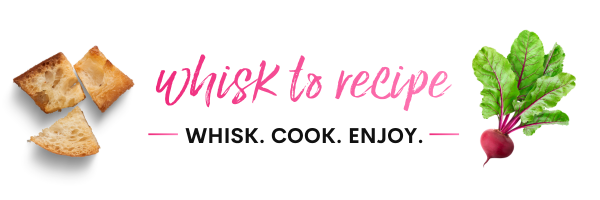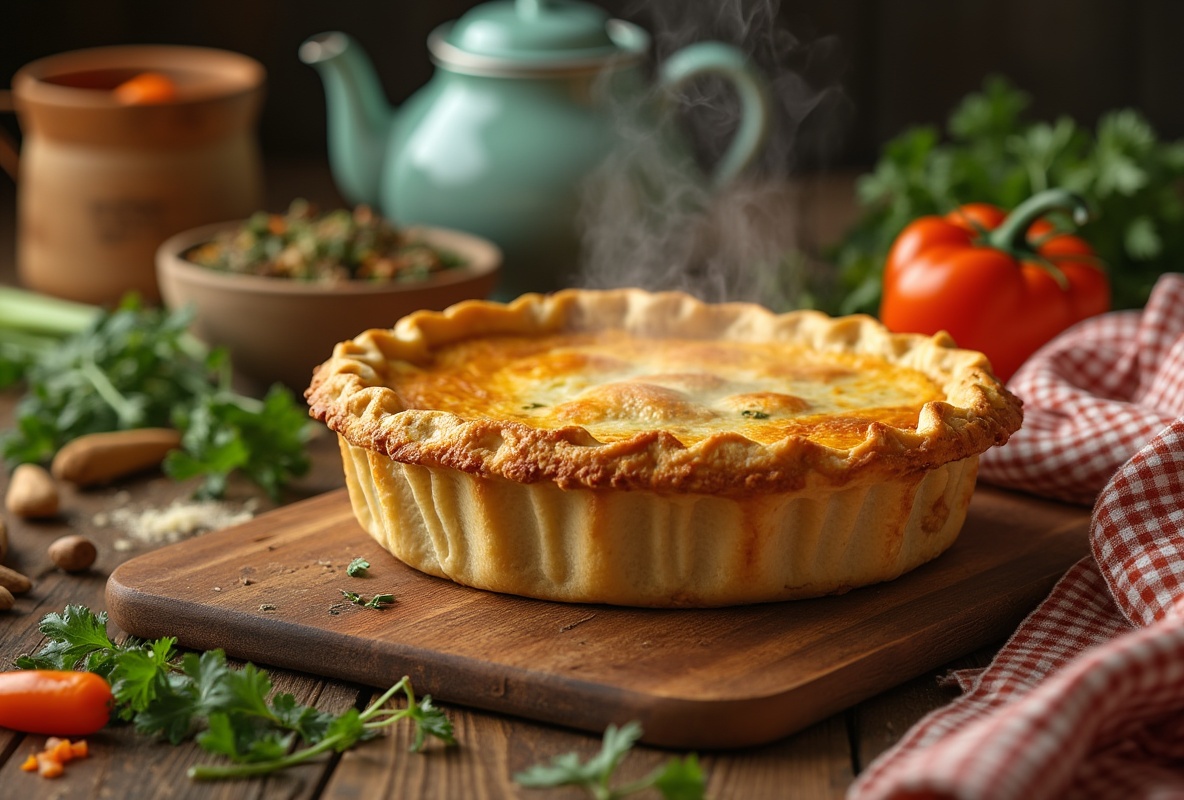Exploring Vegan Pie Crusts: A Delicious Journey
In our quest for the perfect pie, vegan pie crust options offer a delightful and versatile avenue to explore. Whether you're venturing into vegan baking for health reasons, ethical choices, or just curious about plant-based diets, these pie crusts can satisfy anyone's palate. With a variety of ingredients to experiment with, they provide a rich tapestry of flavors and textures. Plus, making or even purchasing a vegan pie crust has never been easier or more rewarding. Join me as we dive into this flavorful journey and discover the magic of vegan pie crusts.
Key Ingredients for Plant-Based Pie Crusts
When it comes to crafting the perfect vegan pot pie, the choice of ingredients plays a vital role. Flour is the foundation. While all-purpose works for many, experimenting with whole wheat or spelt flour can add a nutty flavor. Fat is crucial too. Instead of butter, I reach for plant-based alternatives like coconut oil or vegan margarine, both providing that desired flaky texture. Baking is all about balance, and salt adds that necessary touch, enhancing other flavors. Some even swear by a dash of sugar, especially in crusts for savory pies like vegan pot pies, to contrast and elevate the flavors within. To bind it all together, water is essential. Ice-cold water, to be exact. It brings everything together without melting your fat, which helps create pockets in the dough as it bakes, leading to a flakier crust. For those adventurous at heart, adding ground flaxseed or chia seeds can enhance the texture and add nutrients. These foundational ingredients, when lovingly combined, lay the groundwork for an unforgettable vegan pie experience.
Store-Bought Vegan Pie Crust Options: Convenience Meets Quality
Exploring vegan pie crust options at the store is like embarking on a delightful treasure hunt. As someone who loves the idea of a quick and hassle-free baking session, I often find store-bought crusts to be incredibly convenient. Many brands have embraced the plant-based movement, offering an assortment of high-quality crusts that cater even to the pickiest pie enthusiasts. When selecting a store-bought crust, I look for a few things: flavor, texture, and, importantly, the ingredient list. Convenient choices often include a flaky, buttery texture without using any animal products. It's easy to find versatile options, whether you're aiming to whip up a savory vegan pot pie or a sweet treat filled with luscious fruits. Some brands also offer gluten-free alternatives, which is a fantastic bonus for those with dietary restrictions. Here’s a tip: always scrutinize the packaging to ensure the crust is both vegan and aligns with your taste preferences. With these ready-made wonders, baking becomes not just easy but a fun and spontaneous adventure!
Making Homemade Vegan Pie Crust: Tips and Tricks
When it comes to making a homemade vegan pie crust, it's easier than you might think, and it's a fantastic way to elevate your vegan pot pie to gourmet status. First, select the right flour. I usually go for all-purpose or whole wheat to keep things classic. Next, choose a solid fat like coconut oil or vegan butter. Cold ingredients are the key to a flaky crust, so be sure your fat and water are well-chilled before you start. Mix them together gently, just until you see pea-sized pieces of fat distributed throughout the flour.
A few additional tricks to consider:
- Use a pastry cutter or your fingers to work the fat into the flour, maintaining those small fat pockets.
- Add water sparingly—a tablespoon at a time—until your dough just holds together.
- Chill the dough for at least 30 minutes before rolling it out to make handling easier.
Don't forget to let your crust cool slightly after baking if you're going for a sweet filling. For a hearty vegan pot pie, fill it while the crust is still warm to retain the soup-like, savory flavors. This method ensures your pie is both delicious and beautifully presented.
Gluten-Free and Vegan: A Double Delight in Pie Crusts
Creating a pie crust that is both vegan and gluten-free might seem like a challenge, but it opens up a world of delicious possibilities. I’ve spent countless hours experimenting to find the perfect blend of ingredients that cater to both dietary preferences. The key? Understanding the right substitutes. Instead of traditional wheat flour, I opt for a blend of almond flour and gluten-free oat flour. These not only provide the perfect texture but also add a slight nutty flavor that complements a variety of fillings. For binding, flaxseed meal combined with water works wonders—the mixture becomes a fantastic egg replacement. The fat component can be achieved using coconut oil or a vegan butter, which gives the crust a flaky texture. When whipping up a vegan pot pie, this crust variation brings an extra layer of taste. It’s heartening to know that one doesn’t have to sacrifice flavor when catering to specific dietary needs. Plus, once you get the hang of it, you’ll find that making gluten-free vegan crusts becomes a rewarding ritual rather than a task.
Flavor Variations in Vegan Pie Crusts: Get Creative!
Diving into the world of vegan pie crusts opens up delightful possibilities for flavor adventures! As a fan of experimenting, I've found that infusing different ingredients into your crust can transform a simple dish into something extraordinary. Here are some ideas to consider:
-
Herbed Crust: Adding fresh herbs like rosemary, thyme, or basil can add a savory twist, especially when making a savory dish like a vegan pot pie.
-
Nutty Element: Incorporate ground nuts like almonds or pecans into your dough for a rich, nutty flavor that pairs beautifully with both sweet and savory fillings.
-
Spiced Delight: For sweet vegan pies, try adding cinnamon, nutmeg, or ginger to your crust. These spices can enhance the filling flavors, creating a warm, inviting taste.
- Coconut Infusion: Using coconut oil or adding shredded coconut can introduce a subtle tropical flavor that's perfect for fruit pies.
Remember, the key is to have fun and try new combinations. Whether it’s a sprinkle of sea salt or a dash of vanilla, small tweaks can make your vegan pie crust uniquely yours. Enjoy the creative process!
Matching Fillings and Vegan Pie Crusts for Perfect Pairings
When it comes to creating the perfect vegan pie, pairing the right filling with the right crust is essential. One of my all-time favorites is the Vegan Pot Pie. The hearty, savory filling packed with fresh vegetables like carrots, peas, and potatoes pairs wonderfully with a flaky, golden-brown crust. A butter-flavored vegan dough can elevate the taste, enhancing the earthy rich flavors of the pot pie. For a different taste and a bit of crunch, using a nut-based crust made with ground almonds or pecans can bring a delightful texture contrast. If you're feeling adventurous, you might explore a hint of garlic or herbs in your crust to complement a savory pumpkin or mushroom filling. Don't forget the importance of balancing sweetness and saltiness! A slightly sweet crust can add unexpected layers of flavor to fillings like creamy chickpea or sweet potato, turning your pie into a memorable culinary masterpiece. Testing these combinations will amaze you with the endless flavors that come alive in every bite.
Frequently Asked Questions
Can I freeze a homemade vegan pie crust for later use?
Yes, you can freeze a homemade vegan pie crust! After preparing the dough, wrap it tightly in plastic wrap and place it in a freezer-safe bag. It will keep for up to three months. To use, just let it thaw in the refrigerator overnight.
What are the best fats to use in vegan pie crusts?
Coconut oil and vegan butter are popular choices for vegan pie crusts. Both provide a flaky texture, but coconut oil offers a subtly sweet flavor, while vegan butter gives a more traditional taste.
How can I make my vegan pie crust gluten-free?
To make a gluten-free vegan pie crust, substitute traditional flour with a gluten-free flour blend. You may need to adjust the moisture content slightly by adding a bit more water to reach the desired dough consistency.
Why did my vegan pie crust turn out too crumbly?
A crumbly vegan pie crust often results from not enough moisture or overworking the dough. Try adding a teaspoon of water at a time until the dough holds together when pressed.
What flavors can I add to my vegan pie crust for a unique twist?
You can infuse your vegan pie crust with various flavors by adding ingredients like cinnamon, cocoa powder, or herbs. These additions can enhance the taste and complement your pie filling beautifully.

